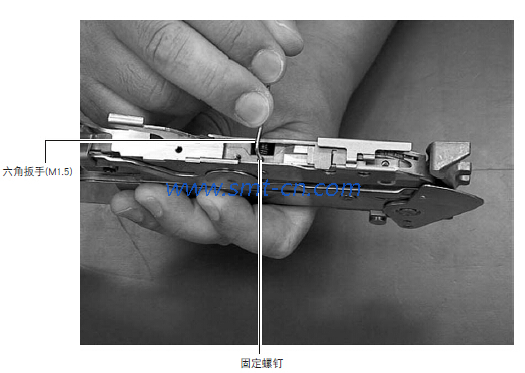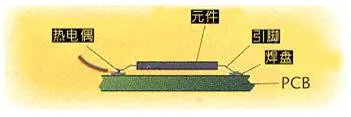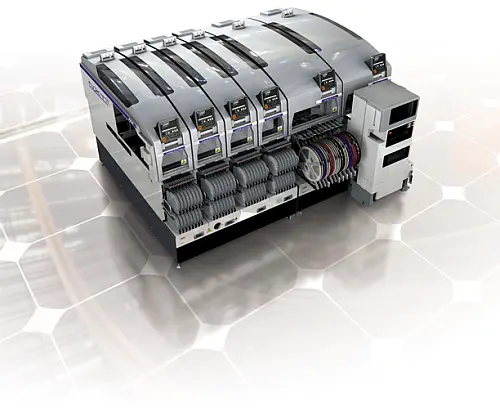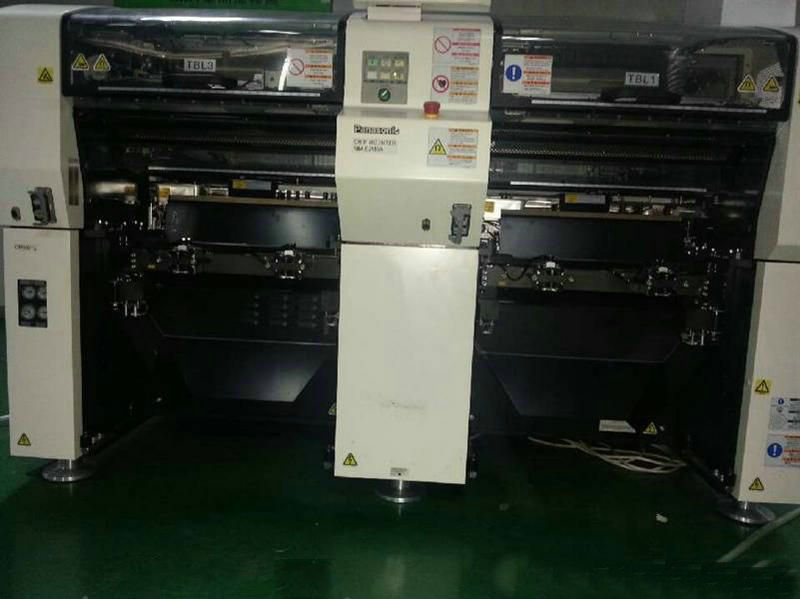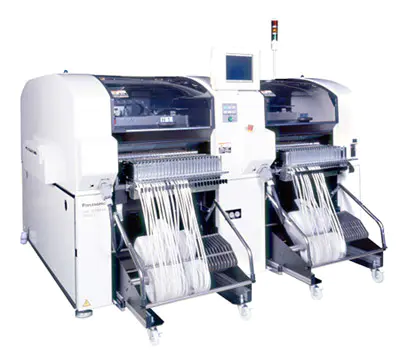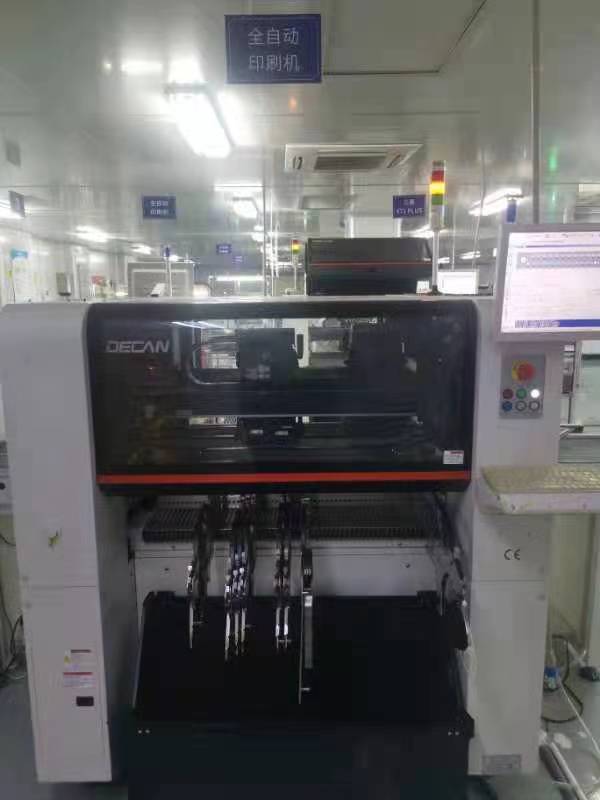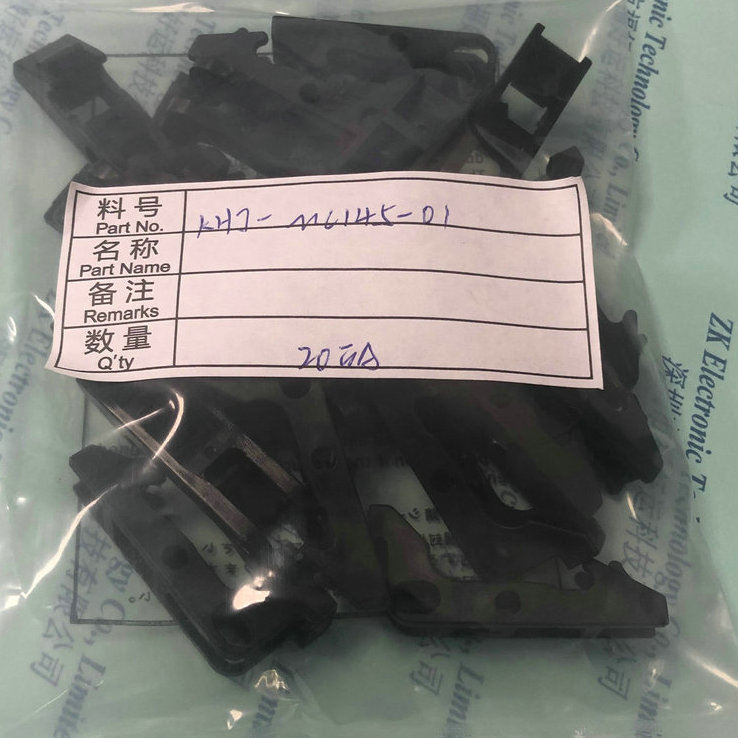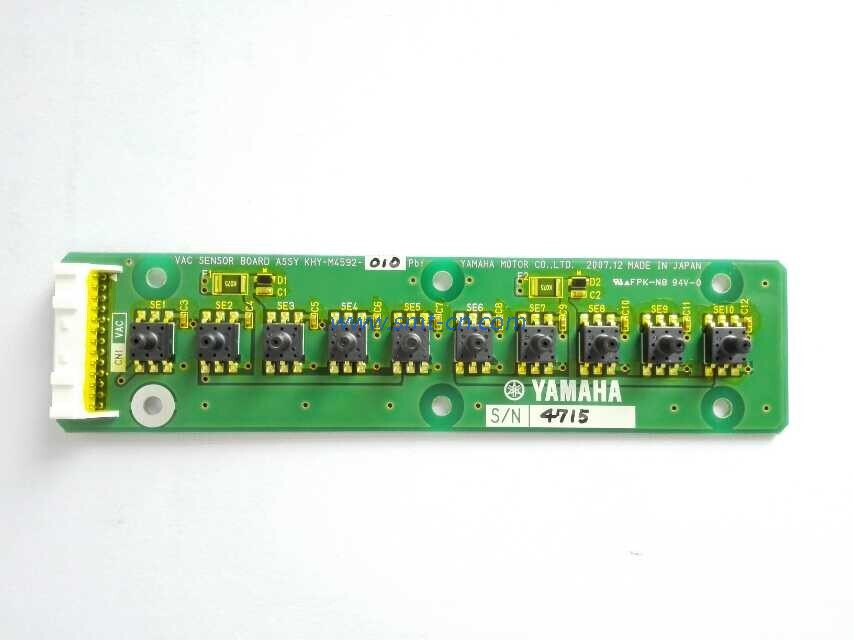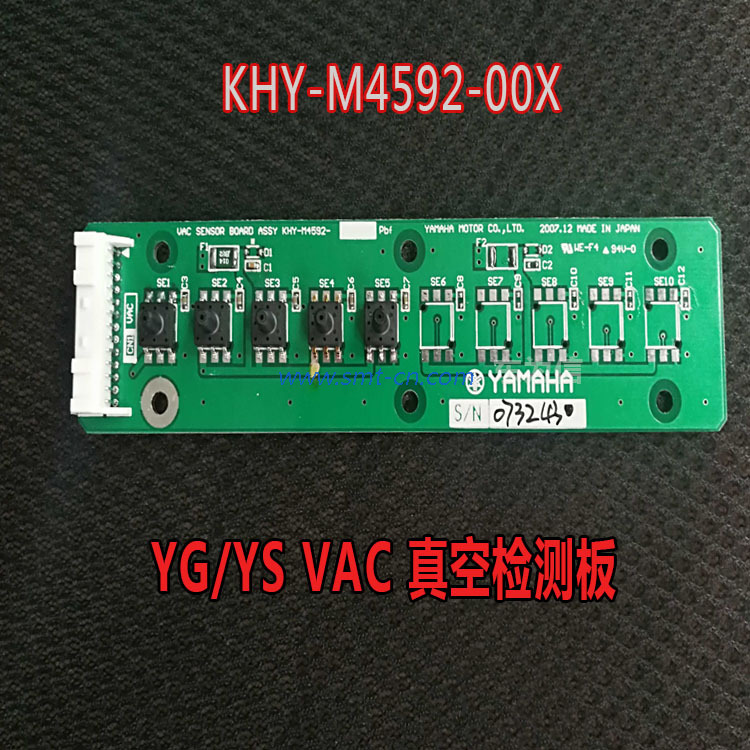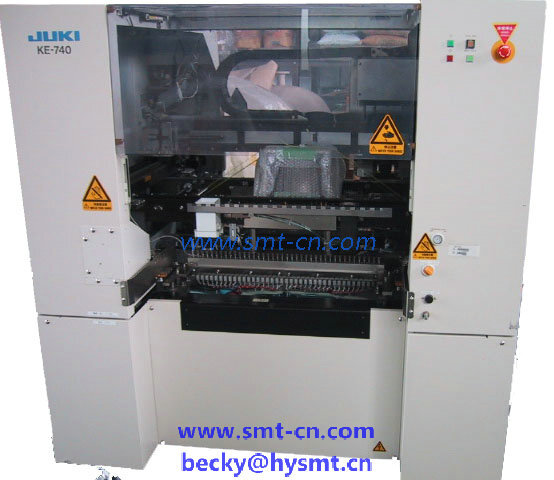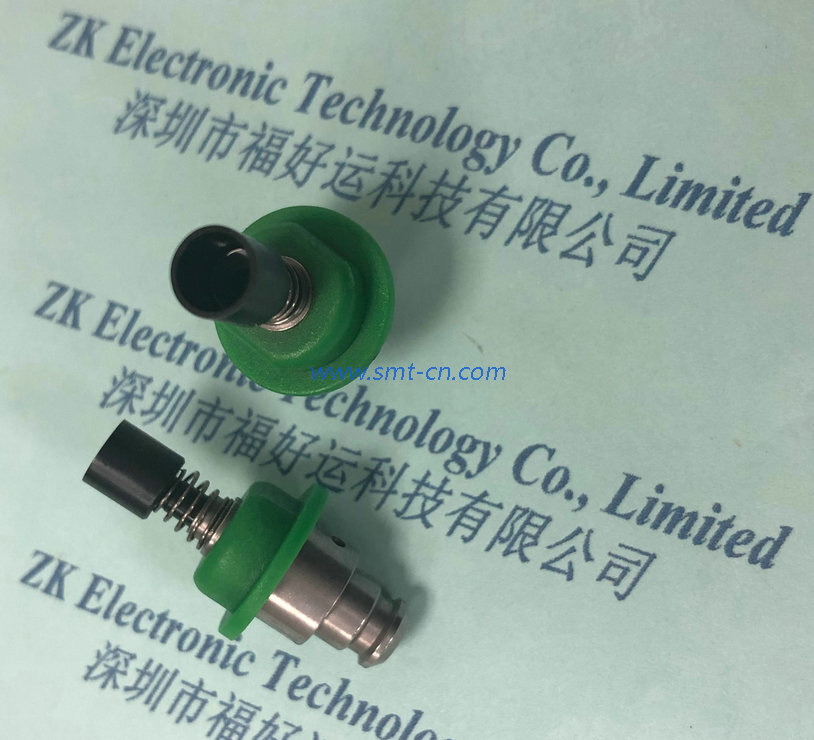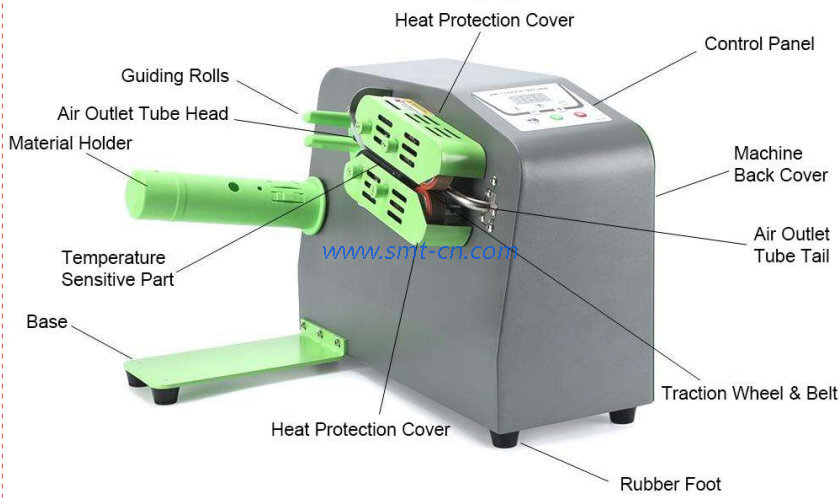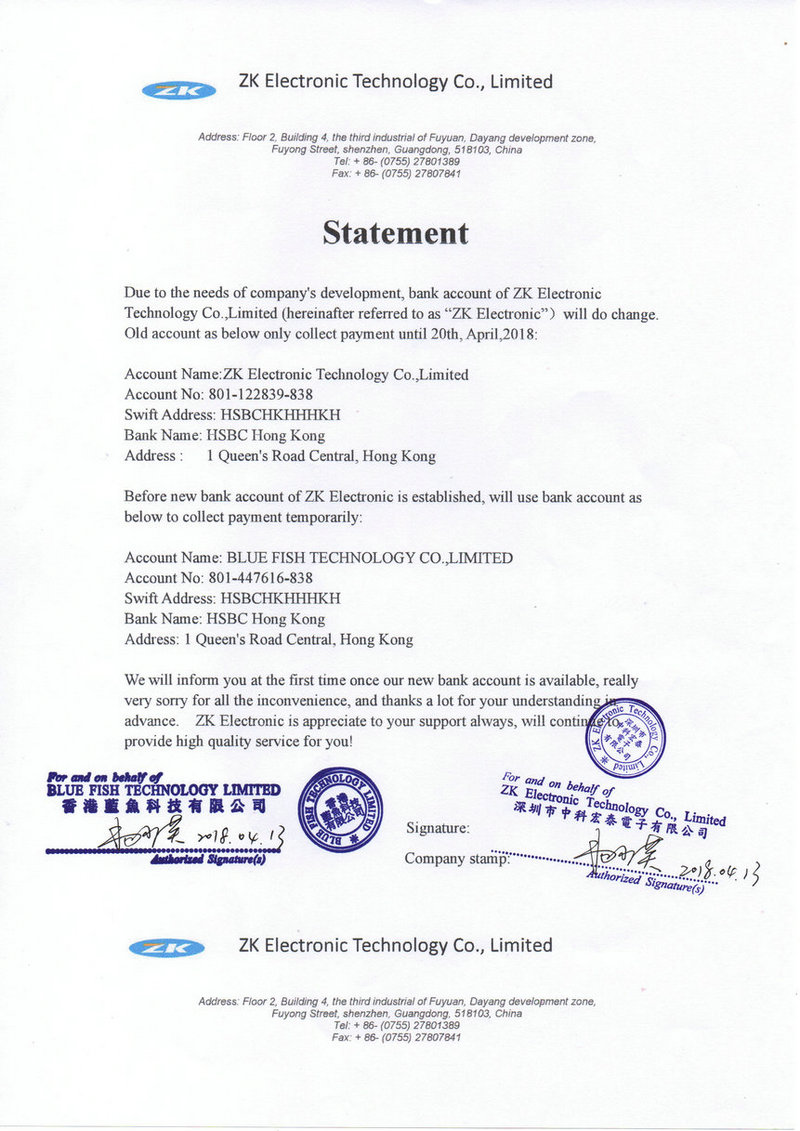NEWS
Printing process requirements and characteristics
- Categories:Industry News
- Author:Becky Su
- Origin:
- Time of issue:2023-02-13 11:18
- Views:
(Summary description)Printing process requirements and characteristics In reflow soldering of surface mount assemblies, solder paste is used for the connection between the pins or terminals and pads of surface mount components with many variables. Such as the solder paste, the screen printing machine, the method of application of the solder paste and the printing process. In the process of printing the solder paste, the substrate is placed on the table, mechanically or vacuum clamped into position, aligned with positioning pins or vision, and the solder paste is printed with a stencil (stencil). In the stencil solder paste printing process, the press is the key to achieving the desired print quality. During the printing process, the solder paste is dispensed automatically, and the printing squeegee is pressed downward on the stencil so that the bottom surface of the stencil touches the top surface of the board. As the squeegee travels the entire length of the eroded graphic area, the solder paste is printed onto the pads through the openings in the stencil/screen. After the solder paste has been deposited, the screen comes off (snapoff) immediately after the squeegee and returns to its original position. This spacing or snapoff distance is set by the equipment design and is approximately 0.020" to 0.040". The disengagement distance and squeegee pressure are two important equipment-related variables for achieving good print quality. If not disengaged, this process is called on-contact printing. Contact printing is used when all-metal stencils and squeegees are used. Off-contact printing is used for flexible wire screens. There are three key elements in solder paste screen printing, which we call 3S: Solder paste, Stencils, and Squeegees. The correct combination of these three elements is the key to consistent screen printing quality. Scraper (squeegee) Squeegee role In the printing, so that the squeegee will be rolled in front of the paste, so that it flows into the stencil hole, and then scrape off the excess paste, leaving the PCB pad with the same thickness of the stencil solder paste. There are two common types of squeegee: rubber or polyurethane (polyurethane) squeegee and metal squeegee. Metal squeegee made of stainless steel or brass, with a flat blade shape, the use of the printing angle of 30 to 55 °. When using higher pressure, it does not dig out the solder paste from the open hole, but also because it is metal, they are not as easy to wear as rubber squeegees, so they do not need to be sharp. They are much more expensive than rubber squeegees and can cause stencil wear. Rubber squeegees, using 70-90 rubber durometer hardness (durometer) squeegees. When too much pressure is used, the solder paste that seeps into the bottom of the stencil may cause bridging, requiring frequent bottom wiping. It may even damage the squeegee and stencil or screen. Too high a pressure also tends to dig the solder paste out of wide openings, causing insufficient solder rounding. Low squeegee pressure causes omissions and rough edges. Squeegee wear, pressure and hardness determine print quality and should be carefully monitored. For acceptable print quality, squeegee edges should be sharp, straight and straight. Stencil (stencil) types The main stencils used today are stainless steel stencils, which are made by three main processes: chemical etching, laser cutting and electroforming. Since metal stencils and metal squeegees produce a fuller paste, sometimes the thickness of the print is too thick, which can be corrected by reducing the thickness of the stencil. In addition, the area of solder paste on the pad can be reduced by reducing ("fine tuning") the length and width of the fillet by 10 %. This improves the sealing of the frame between the stencil and the pad caused by the misalignment of the pad, and reduces the "blow-out" of the solder paste between the stencil bottom and the PCB. The cleaning of the bottom surface of the printed stencil can be reduced from once every 5 or 10 prints to once every 50 prints. Solder paste (solder paste) Solder paste is a combination of tin powder and rosin. The function of rosin is to remove oxide from component pins, pads and beads during the first stage of reflowing, which lasts about three minutes at 150°C. Solder, an alloy of lead, tin and silver, is reflowed in the **stage of the reflowing oven, at approximately 220? Viscosity is an important characteristic of the solder paste, and we require that the lower its viscosity during the printing stroke, the better its flow, and the easier it is to flow into the stencil holes and print onto the pads of the PCB. After printing, the solder paste stays on the PCB pads, its high viscosity, it maintains its filled shape and does not collapse downward. The standard viscosity of solder paste is about 500kcps ~ 1200kcps range, more typical 800kcps for stencil screen printing is ideal. A practical and economical way to determine if a solde
Printing process requirements and characteristics
(Summary description)Printing process requirements and characteristics
In reflow soldering of surface mount assemblies, solder paste is used for the connection between the pins or terminals and pads of surface mount components with many variables. Such as the solder paste, the screen printing machine, the method of application of the solder paste and the printing process. In the process of printing the solder paste, the substrate is placed on the table, mechanically or vacuum clamped into position, aligned with positioning pins or vision, and the solder paste is printed with a stencil (stencil).
In the stencil solder paste printing process, the press is the key to achieving the desired print quality.
During the printing process, the solder paste is dispensed automatically, and the printing squeegee is pressed downward on the stencil so that the bottom surface of the stencil touches the top surface of the board. As the squeegee travels the entire length of the eroded graphic area, the solder paste is printed onto the pads through the openings in the stencil/screen. After the solder paste has been deposited, the screen comes off (snapoff) immediately after the squeegee and returns to its original position. This spacing or snapoff distance is set by the equipment design and is approximately 0.020" to 0.040".
The disengagement distance and squeegee pressure are two important equipment-related variables for achieving good print quality.
If not disengaged, this process is called on-contact printing. Contact printing is used when all-metal stencils and squeegees are used. Off-contact printing is used for flexible wire screens.
There are three key elements in solder paste screen printing, which we call 3S: Solder paste, Stencils, and Squeegees. The correct combination of these three elements is the key to consistent screen printing quality.
Scraper (squeegee)
Squeegee role
In the printing, so that the squeegee will be rolled in front of the paste, so that it flows into the stencil hole, and then scrape off the excess paste, leaving the PCB pad with the same thickness of the stencil solder paste.
There are two common types of squeegee: rubber or polyurethane (polyurethane) squeegee and metal squeegee.
Metal squeegee made of stainless steel or brass, with a flat blade shape, the use of the printing angle of 30 to 55 °. When using higher pressure, it does not dig out the solder paste from the open hole, but also because it is metal, they are not as easy to wear as rubber squeegees, so they do not need to be sharp. They are much more expensive than rubber squeegees and can cause stencil wear.
Rubber squeegees, using 70-90 rubber durometer hardness (durometer) squeegees. When too much pressure is used, the solder paste that seeps into the bottom of the stencil may cause bridging, requiring frequent bottom wiping. It may even damage the squeegee and stencil or screen. Too high a pressure also tends to dig the solder paste out of wide openings, causing insufficient solder rounding. Low squeegee pressure causes omissions and rough edges.
Squeegee wear, pressure and hardness determine print quality and should be carefully monitored. For acceptable print quality, squeegee edges should be sharp, straight and straight.
Stencil (stencil) types
The main stencils used today are stainless steel stencils, which are made by three main processes: chemical etching, laser cutting and electroforming.
Since metal stencils and metal squeegees produce a fuller paste, sometimes the thickness of the print is too thick, which can be corrected by reducing the thickness of the stencil.
In addition, the area of solder paste on the pad can be reduced by reducing ("fine tuning") the length and width of the fillet by 10 %. This improves the sealing of the frame between the stencil and the pad caused by the misalignment of the pad, and reduces the "blow-out" of the solder paste between the stencil bottom and the PCB. The cleaning of the bottom surface of the printed stencil can be reduced from once every 5 or 10 prints to once every 50 prints.
Solder paste (solder paste)
Solder paste is a combination of tin powder and rosin. The function of rosin is to remove oxide from component pins, pads and beads during the first stage of reflowing, which lasts about three minutes at 150°C. Solder, an alloy of lead, tin and silver, is reflowed in the **stage of the reflowing oven, at approximately 220?
Viscosity is an important characteristic of the solder paste, and we require that the lower its viscosity during the printing stroke, the better its flow, and the easier it is to flow into the stencil holes and print onto the pads of the PCB. After printing, the solder paste stays on the PCB pads, its high viscosity, it maintains its filled shape and does not collapse downward.
The standard viscosity of solder paste is about 500kcps ~ 1200kcps range, more typical 800kcps for stencil screen printing is ideal. A practical and economical way to determine if a solde
- Categories:Industry News
- Author:Becky Su
- Origin:
- Time of issue:2023-02-13 11:18
- Views:
Printing process requirements and characteristics
In reflow soldering of surface mount assemblies, solder paste is used for the connection between the pins or terminals and pads of surface mount components with many variables. Such as the solder paste, the screen printing machine, the method of application of the solder paste and the printing process. In the process of printing the solder paste, the substrate is placed on the table, mechanically or vacuum clamped into position, aligned with positioning pins or vision, and the solder paste is printed with a stencil (stencil).
In the stencil solder paste printing process, the press is the key to achieving the desired print quality.
During the printing process, the solder paste is dispensed automatically, and the printing squeegee is pressed downward on the stencil so that the bottom surface of the stencil touches the top surface of the board. As the squeegee travels the entire length of the eroded graphic area, the solder paste is printed onto the pads through the openings in the stencil/screen. After the solder paste has been deposited, the screen comes off (snapoff) immediately after the squeegee and returns to its original position. This spacing or snapoff distance is set by the equipment design and is approximately 0.020" to 0.040".
The disengagement distance and squeegee pressure are two important equipment-related variables for achieving good print quality.
If not disengaged, this process is called on-contact printing. Contact printing is used when all-metal stencils and squeegees are used. Off-contact printing is used for flexible wire screens.
There are three key elements in solder paste screen printing, which we call 3S: Solder paste, Stencils, and Squeegees. The correct combination of these three elements is the key to consistent screen printing quality.
Scraper (squeegee)
Squeegee role
In the printing, so that the squeegee will be rolled in front of the paste, so that it flows into the stencil hole, and then scrape off the excess paste, leaving the PCB pad with the same thickness of the stencil solder paste.
There are two common types of squeegee: rubber or polyurethane (polyurethane) squeegee and metal squeegee.
Metal squeegee made of stainless steel or brass, with a flat blade shape, the use of the printing angle of 30 to 55 °. When using higher pressure, it does not dig out the solder paste from the open hole, but also because it is metal, they are not as easy to wear as rubber squeegees, so they do not need to be sharp. They are much more expensive than rubber squeegees and can cause stencil wear.
Rubber squeegees, using 70-90 rubber durometer hardness (durometer) squeegees. When too much pressure is used, the solder paste that seeps into the bottom of the stencil may cause bridging, requiring frequent bottom wiping. It may even damage the squeegee and stencil or screen. Too high a pressure also tends to dig the solder paste out of wide openings, causing insufficient solder rounding. Low squeegee pressure causes omissions and rough edges.
Squeegee wear, pressure and hardness determine print quality and should be carefully monitored. For acceptable print quality, squeegee edges should be sharp, straight and straight.
Stencil (stencil) types
The main stencils used today are stainless steel stencils, which are made by three main processes: chemical etching, laser cutting and electroforming.
Since metal stencils and metal squeegees produce a fuller paste, sometimes the thickness of the print is too thick, which can be corrected by reducing the thickness of the stencil.
In addition, the area of solder paste on the pad can be reduced by reducing ("fine tuning") the length and width of the fillet by 10 %. This improves the sealing of the frame between the stencil and the pad caused by the misalignment of the pad, and reduces the "blow-out" of the solder paste between the stencil bottom and the PCB. The cleaning of the bottom surface of the printed stencil can be reduced from once every 5 or 10 prints to once every 50 prints.
Solder paste (solder paste)
Solder paste is a combination of tin powder and rosin. The function of rosin is to remove oxide from component pins, pads and beads during the first stage of reflowing, which lasts about three minutes at 150°C. Solder, an alloy of lead, tin and silver, is reflowed in the **stage of the reflowing oven, at approximately 220?
Viscosity is an important characteristic of the solder paste, and we require that the lower its viscosity during the printing stroke, the better its flow, and the easier it is to flow into the stencil holes and print onto the pads of the PCB. After printing, the solder paste stays on the PCB pads, its high viscosity, it maintains its filled shape and does not collapse downward.
The standard viscosity of solder paste is about 500kcps ~ 1200kcps range, more typical 800kcps for stencil screen printing is ideal. A practical and economical way to determine if a solder paste has the correct viscosity is as follows.
Stir the paste with a scraper in the container can for about 30 seconds, then pick up some paste, three or four inches above the container can, let the paste drip down on its own, the beginning should be like a thick syrup like sliding down, and then broken off in sections to fall into the container can. If the paste does not slide down, it is too thick and the viscosity is too low. If it keeps falling without breaking, it is too thin and the viscosity is too low.
Control of process parameters for printing
Stencil and PCB separation speed and separation distance (Snap-off)
After screen printing, the PCB is separated from the screen printing stencil, leaving the solder paste on the PCB instead of inside the screen printing hole. For the finest screen printed holes, the solder paste may adhere more easily to the hole walls than to the pads, the thickness of the stencil is important, two factors are favorable, first, the pads are a continuous area, while the inner wall of the screen hole is divided into four sides in most cases, helping to release the solder paste; second, gravity and adhesion to the pads together, in the screen printing and separation time spent 2 to 6 seconds, the solder paste will be pulled out of the screen hole adhesion on the PCB. To * maximize this beneficial effect, the separation time can be delayed, starting with a slow PCB separation. Many machines allow a delay after screen printing, and the first 2 to 3 mm of table drop can be adjusted to a slower travel speed.
Printing Speed
The speed of the squeegee travel on the printing stencil during printing is important because the solder paste needs time to roll and flow into the die hole. If there is not enough time, then the paste will not be flat on the pad in the direction of the squeegee travel. When the speed is higher than 20 mm per second, the squeegee may scrape through small die holes in less than a few tens of milliseconds.
Printing pressure
The printing pressure must be coordinated with the hardness of the squeegee. If the pressure is too small, the squeegee will not scrape the solder paste on the stencil, if the pressure is too large or the squeegee is too soft, then the squeegee will sink into the larger hole on the stencil to dig out the solder paste.
Empirical formula for pressure
To obtain the correct pressure when using a squeegee on a metal stencil, start by applying 1 kg of pressure for every 50 mm of squeegee length, e.g. 6 kg for a 300 mm squeegee, gradually reduce the pressure until the paste starts to scrape cleanly on the stencil, then increase the pressure by 1 kg. There should be an acceptable range of 1 to 2 kg between the time the paste starts to scrape clean and the time the squeegee sinks into the screen hole and digs out the paste to achieve good screen printing results.
In order to achieve good printing results, there must be a combination of the right solder paste material (viscosity, metal content, *large powder size and the lowest possible* flux activity), the right tools (press, stencil and squeegee) and the right process (good positioning, clean wiping). According to different products, set the corresponding printing process parameters in the printing program, such as working temperature, working pressure, squeegee speed, automatic cleaning cycle of the stencil, etc. Strict process management development and process protocols should also be established.
① Use the solder paste strictly according to the specified brand within the expiration date, store the solder paste in the refrigerator on weekdays, and require it to be kept at room temperature for more than 6 hours before use, before opening the lid and using it, and store the solder paste separately after use, and make sure the quality is qualified when using it again.
② Before production, the operator uses a special stainless steel rod to stir the solder paste to make it uniform, and regularly use a viscosity tester to spot test the viscosity of the solder paste.
③ When the first piece of printing analysis or equipment adjustment, we should use the solder paste thickness tester to determine the thickness of the solder paste printing, test points selected in the printing plate test surface of the upper and lower, left and right and the middle of the five points, record the value, the required solder paste thickness range between the thickness of the template - 10% - the thickness of the template + 15%.
④ During the production process, the quality of solder paste printing is 100% inspected, the main contents are whether the solder paste pattern is complete, whether the thickness is uniform, and whether there is the phenomenon of solder paste pulling tip.
⑤ Clean the stencil according to the process requirements after the shift is completed.
⑥After the printing experiment or printing failure, the solder paste on the printed board is required to be thoroughly cleaned with ultrasonic cleaning equipment and dried, or cleaned with alcohol and with high pressure gas to prevent the emergence of solder balls and other phenomena after reflow soldering caused by residual solder paste on the board when used again.
Related News
CONTACT US
Hotline:(0086)755-27801389
Mobile: (0086)15323874439
Sale No.1: becky@hysmt.cn
Sale No.2: fhysmt@hysmt.cn
Sale No.3: zksale@hysmt.cn
Sale No.4: sale@hysmt.cn
Sale No.5: elsey@hysmt.cn
GIVE ME A MESSAGE
Copyright: ZK Electronic Technology Co., Ltd 粤ICP备11054297号 Powered by www.300.cn



